#craft work
Text
Podcasting "Gig Work Is the Opposite of Steampunk"
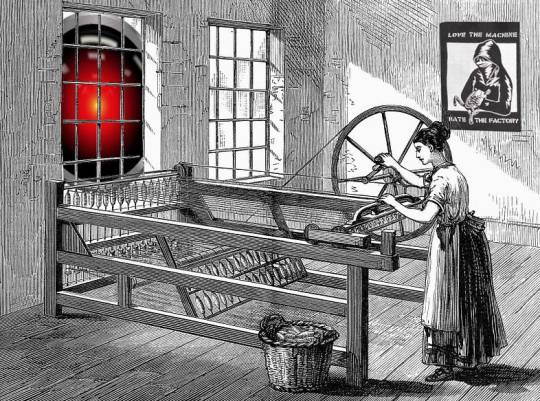
This week on my podcast, I read my recent Medium column, “Gig Work Is the Opposite of Steampunk,” about the worst-of-all-worlds created by bossware, where an app is your boss, and you live at work because your home and/or car is a branch office of the factory:
https://doctorow.medium.com/gig-work-is-the-opposite-of-steampunk-463e2730ef0d
As with so much of my work these days, the column opens with a reference to the Luddites, and to Brian Merchant’s superb, forthcoming history of the Luddite uprisings, “Blood in the Machine”:
https://www.littlebrown.com/titles/brian-merchant/blood-in-the-machine/9780316487740/
If you’d like an essay-formatted version of this post to read or share, here’s a link to it on pluralistic.net, my surveillance-free, ad-free, tracker-free blog:
https://pluralistic.net/2023/03/19/love-the-machine/#hate-the-factory
As Merchant explains, the Luddites were anything but technophobes: they were skilled high-tech workers whose seven-year apprenticeships were the equivalent to getting a Master’s in Engineering from MIT. Their objection to powered textile machines had nothing to do with fear of the machines: rather, it was motivated by a clear-eyed understanding of how factory owners wanted to use the machines.
The point of powered textile machines wasn’t to increase the productivity of skilled textile workers — rather, it was to smash the guilds that represented these skilled workers and ensured that they shared in the profits from their labor. The factory owners wanted machines so simple a child could use them — because they were picking over England’s orphanages and recruiting small children through trickery to a ten-year indenture in the factories.
The “dark, Satanic mills” of the industrial revolution were awash in the blood and tears of children. These child-slaves were beaten and starved, working long hours on little sleep for endless years, moving among machines that could snatch off a limb, a scalp, even your head, after a moment’s lapse in attention.
(Fun fact: in 1832, Robert Blincoe, one of children who survived the factories, published “A Memoir of Robert Blincoe, an Orphan Boy” a bestseller recounting the horrors he endured; that book inspired Charles Dickens to write Oliver Twist):
https://www.gutenberg.org/files/59127/59127-h/59127-h.htm
It wasn’t just that weavers who belonged to guilds made more money — they also enjoyed more dignity in their workplaces, because those workplaces were their homes. Textiles were the original “cottage industries,” in that it was done in cottages, by families who set their own pace, enjoying amiable conversation or companionable silence.
These weavers could go to the bathroom when they wanted, eat when they wanted, take a break and walk around outside when the weather was fine.
This is in stark contrast to life in the dark, Satanic mills, where foremen watched over every movement, engaging in a kind of meanspirited choreography that treated the worker as an inferior adjunct to the machine, to be fit to its workings and worked to its tireless schedule.
The Luddites had some technical critiques of the machines — they argued, correctly, that those early machines turned out inferior products that fit poorly and degraded quickly. But even if the machines had produced textiles to match the hand-looms, the Luddites’ real anger wasn’t over what the machines did — it was over who the machines did it to and who they did it for.
I’ve written that “Science Fiction is a Luddite literature” — it’s a narrative form that can go beyond describing what a machine does, to demanding that we rethink who it does it for and who it does it to. Not all sf does this, but at its best, this is secret sauce that makes sf such a radical form, one that insists that while the machines’ functioning may be deterministic, their social arrangements are up to us:
https://locusmag.com/2022/01/cory-doctorow-science-fiction-is-a-luddite-literature/
That’s what happens when you mix Luddism with SF — but what happens when you mix it with fantasy? I think you get steampunk.
Steampunk has many different valences, but central to the project is an imaginary world where people engaged in craft labor (lone mad scientists, say) are able to produce high-tech goods that are more associated with factories. I think it’s no coincidence that steampunk took root during the first surge of “peer-based commons production” — when craft workers were producing whole operating systems and encyclopedias from their “cottages”:
https://makezine.com/article/maker-news/make-free-love-the-machine-hate-the-factory/
These modern craft workers were living the steampunk fantasy, so beautifully summed up in the motto for Magpie Killjoy’s Steampunk Magazine: “Love the Machine, Hate the Factory.”
https://firestorm.coop/products/2624-steampunk-magazine.html
But then came the second decade of the 21st century, and now the third, and with it, the rise of something very much like the opposite of that steampunk fantasy: a new form of craft labor where the factory is inside the cottage — where an app is your boss, and “work from home” becomes “live at work.”
As with all forms of technological oppression, this movement followed the “Shitty Technology Adoption Curve,” starting with people with little social clout and working its way up the privilege gradient to entangle a widening proportion of workers.
Among the first people to experience this was the predominantly Black, predominantly female employees of Arise, a work-from-home call center business that pretends that its employees are small businesses themselves, and so charges them to get trained for each new client, then fines them if they want to quit:
https://pluralistic.net/2020/10/02/chickenized-by-arise/#arise
In Amazon warehouses and delivery vans, we saw the rise of “chickenized reverse-centaurs” — these are workers who must pay for their own work equipment (as with poultry farmers captured by processing monopolists, hence “chickenized”). They are also paired with digital technology (something automation theorists call a “centaur”) but the technology bosses them around, rather than supporting them. The machine is the centaur’s head and the worker is its body (thus, “reverse-centaur”):
https://pluralistic.net/2021/03/19/the-shakedown/#weird-flex
The pandemic lockdowns saw an explosion in the use of bossware, technology that monitors your every keystroke, every click, every URL, every file, even the video and audio from the cameras and mics on your devices, whether or not you pay for those devices.
This is the second coming of Taylorism, the fine-grained, high-handed “scientific” micromanagement of factory workers, transposed to the home, and integrated with sensors that track you down to your eyeballs:
https://pluralistic.net/2022/08/21/great-taylors-ghost/#solidarity-or-bust
Truly, this is the worst of all worlds. We increasingly work for large, distributed factories, and unlike the big companies of the post-New Deal era, we don’t have unions and progressive regulators who can force these big businesses to share the wealth in the form of the “large firm wage premium.”
Instead, we have craft labor at sweatshop wages, under factory conditions, in our own homes and cars. This needn’t be: digital technologies are powerful labor-organizing tools (potentially), but that’s not how we’ve decided to use them:
https://pluralistic.net/2022/12/02/not-what-it-does/#who-it-does-it-to
As the radical message of sf tells us, that’s a choice, not an inevitability. We aren’t prisoners of technology. We can seize the means of computation. It starts by being less concerned with what the machine does, and homing in on who it does it for and who it does it to.
Here’s this week’s podcast episode:
https://craphound.com/news/2023/03/19/gig-work-is-the-opposite-of-steampunk/
And here’s a direct link to download the MP3 (hosting courtesy of the Internet Archive; they’ll host your media for free, forever):
https://archive.org/download/Cory_Doctorow_Podcast_440/Cory_Doctorow_Podcast_440_-_Gig_Work_Is_the_Opposite_of_Steampunk.mp3
Here’s the direct feed to subscribe to my podcast:
http://feeds.feedburner.com/doctorow_podcast
And here’s the original “Gig Work Is the Opposite of Steampunk” article on Medium:
https://doctorow.medium.com/gig-work-is-the-opposite-of-steampunk-463e2730ef0d
Today (Mar 20), I’m doing a remote talk for the Ostrom Workshop’s Beyond the Web Speaker Series.
On Weds (Mar 22), I’m doing a remote talk for the @IFTF’s “Changing the Register” series.
Image:
Cryteria (modified)
https://commons.wikimedia.org/wiki/File:HAL9000.svg
CC BY 3.0
https://creativecommons.org/licenses/by/3.0/deed.en
[Image ID: A woodcut of a weaver's loft, where a woman works at a hand-loom. Out of the window opposite her looms the glowing, menacing red eye of HAL 9000 from Stanley Kubrick's '2001: A Space Odyssey.' On the wall behind her is the poster from Magpie Killjoy's 'Steampunk Magazine' that reads, 'Love the machine, hate the factory.']
#pluralistic#science fiction is a luddite literature#craft work#love the machine hate the factory#casualization#magpie killjoy#luddites#fantasy#science fiction#steampunk#gig work#podcast#deskilling#child labor#chickenized reverse centaurs
47 notes
·
View notes
Text
Question for my embroidery friends? Do I have to make my embroidery narratively sound?
I've embroidered this series of eyes one looking back at the other until they reach the end, it's supposed to be a commentary on past present and future
My problem though is that past is looking back too, but what does she have to look back on? She's the beginning, she should be looking forward, present looks straight on, following the protagonist in the center of my embroidery, and future looks back on present, pondering what was, it's a cycle you see, but it just makes no sense for past to be looking back, it has nothing to look back on.
14 notes
·
View notes
Text

#meme#mattsmemes#memes that make you go hmmm#crochet#crocheting#stress relief#save a life#yarn#send yarn#arts and crafts#crafting#craft work#craftwork#choke#dont choke people#just dont
6 notes
·
View notes
Text
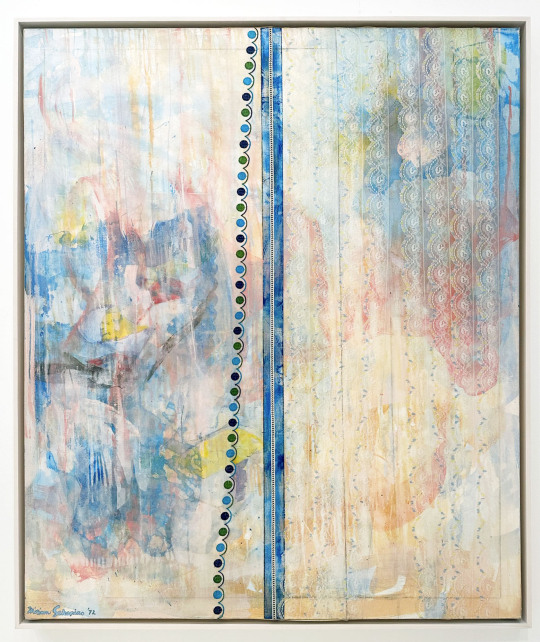


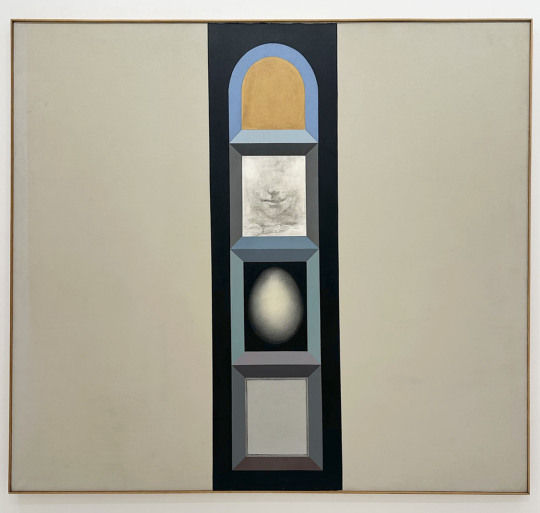

There’s only a few days left to see Miriam Schapiro: The André Emmerich Years, Paintings from 1957–76 at Eric Firestone Gallery.
From the press release-
Miriam Schapiro (1923–2015) is now well-known as a pioneer of the Women’s Art Movement, and for her contribution to the Pattern and Decoration Movement. She fused craft work, traditionally made by women, with modern painting in collages termed “femmage.” However, this exhibition will additionally shed light on her early Abstract Expressionist canvases, and her pioneering approach utilizing computer technology to create Hard Edge geometric painting in the 1960s. Spotlighting the legacy of this feminist artist, the exhibition will explore three stylistic phases, with significant examples from these two decades of Schapiro’s career.
This exhibition closes 5/13/23.
#miriam schapiro#eric firestone gallery#nyc art shows#art#art show#painting#femmage#collage#abstract expressionist#craft work#mixed media#mixed media painting
2 notes
·
View notes
Text
Love the contrast between the Americans’ “Apollo” and the Soviets’ “Sputnik.” You got the Americans naming their rocket after a Greek god trying to communicate the grandness and importance of this rocket. And you got the Soviets naming their rocket “fellow traveler.” Like a friend you go on an adventure with together. This rocket is our little friend lol
#i think its cute#they took the mars rover approach#humanizing the space craft making it cute making us (me) project emotions onto it#the soviets also used imagery of laika in propaganda a lot#which is pretty fucked up imo#but if i grew up in the soviet union that shit wouldve definetly worked on me lmao#the narrative of a heroic little dog going to space and being honored by the whole country#as cruely wrong as it is its very appealing#the soviets knew what they were doing man they didnt reveal how laika really died until like. the 2000s#bc they knew people really cared about that dog#they liked the narrative around her
78K notes
·
View notes
Text
magic system where “dark magic” and “light magic” are literal terms - dark magic consumes photons, making an area around the spell visibly darker, sometimes to an Extreme extent, and light magic releases photons.
because of this most dark mages tend to work in very brightly-lit areas (either artificial light or outside in the daytime) to fuel their spells and wear and use lightly coloured clothes and tools so that they’re easier to see in the dimness their spells create, whereas light mages wear heavy, sometimes leaden robes (depending on the work being done) and the magical equivalent of welding masks to protect themselves from what can be an extreme amount of light, and sometimes other kinds of electromagnet radiation!
needless to say this is incredibly confusing for anyone unfamiliar with the culture
#light mage about to unleash an absurd amount of infrared radiation wearing those heat suits volcanologists use:#of course many light mages dabble in dark magic as extra layers of protection#and vice versa - dark mages using light magic to light up their work spaces#though most specialize#sadly all theories of perpetual spell craft - light spell powering a dark spell#have been proven to not be feasable
48K notes
·
View notes
Text
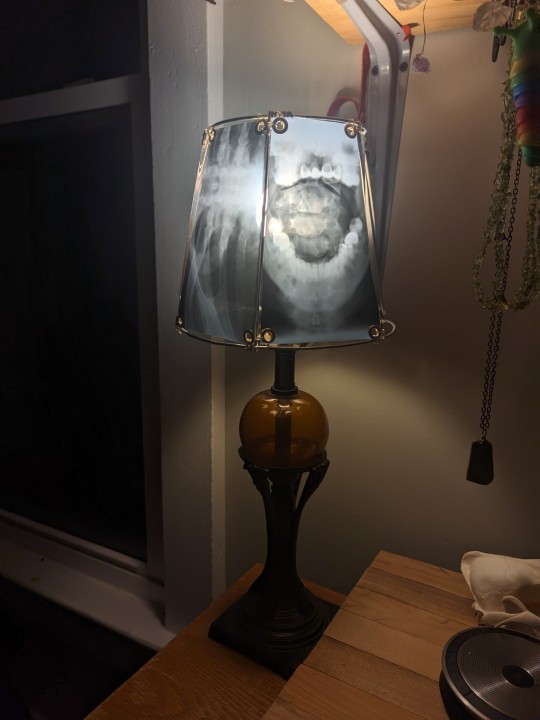
So it turns out you can just buy old x-rays off ebay
#i had wire and a 3 dollar lamp from goodwill that had no shade#what else was i supposed to do?#handmade#arts and crafts#spooky#creepy#xray lampshade#bones#Halloween#once i figured out how to accurately cut the panels to the right size and shape#it went together pretty easy#and now my work office is that much cooler :)
24K notes
·
View notes
Text
Buy Craft Materials Online - High-Quality Supplies
Looking to buy craft materials? Discover a wide range of high-quality craft supplies at Sabezy. Explore our vast collection of craft materials for all your creative needs. Start your crafting journey with us today!
#craft materials (क्राफ्ट मटेरियल्स)#decorative craft materials#craft paper#art and craft#craft work#craft ideas#paper craft ideas#easy craft ideas
0 notes
Text
i was extremely sleep deprived yesterday when i discovered the dragon survival mod which was LIFE CHANGING when you're on three hours of sleep so of course i made a whole custom forest dragon texture in one day about it.
and. just for fun, some concept art i made for it:

#aka i was too tired to trust myself to speak coherently with clients or make commission work up to my standards. but i need to be productive#or ill die#my art#minecraft#mineblr#dragon#dragonsona#of sorts#forest dragon#earth dragon#lush cave#mods in the video tht are noticable btw: complimentary reimagined shaders. alex's mobs. ambient sounds 5. mizuno 16 craft resource pack.#and a really cool seed i found online :]#video#NOT my model but im going to tag it as#my model#since it's 3D work!! actual model made by blackaures who made the mod and also some SICK ass dragon art#also. patreon gets to see the other 3 pages of concept art i made for this later today! :] wink wink nudge. coughs#sorry i need to shill#um. anyways#no name for this dragon yet. i do know it steals livestock from too-small village/illager pens#to give them enriched lives in its expansive cave farm#i'd like to come back to this eventually and touch up the wing design since the glowing spots didnt really shake out
3K notes
·
View notes
Text

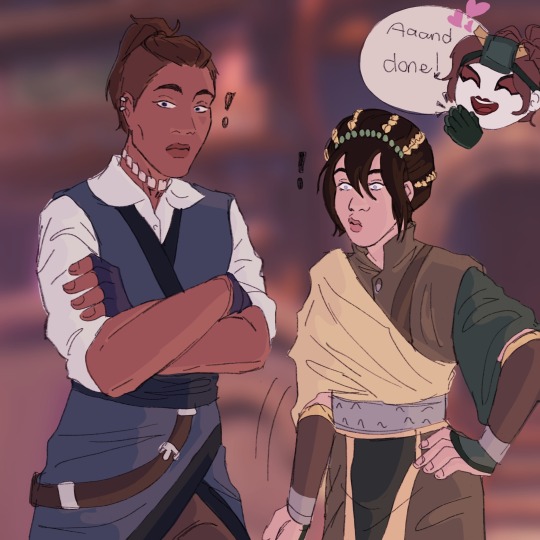



happy birthday to one of the greatest fics of all time <3 ( @bisexuallsokka , thank you for writing this masterpiece.)
#atla#zukka#zuko x sokka#zukka fanart#atla fanart#tangled au#now that i see you#now that i see you fanart#fic fanart#so. this fic…#I know I’ve talked about it like. two or three times in the past#but I’m so serious about it#genuinely it is one of the greatest fics I’ve ever read not even exclusive to this fandom#it’s so well written and thought out and carefully crafted#(much like the rest of Jo’s work but I don’t want these tags to be overly long)#so if you are a tangled fan and anyone with a brain#please give this fic a read#literally? it will change your life#anyway happy birthday to this masterclass beautiful extraordinary masterpiece
3K notes
·
View notes
Text


Angel Delivery Service! You dump ‘em, we jump ‘em.
Crowley’s Coven
The madness won’t stop.
#illustrator#illustration#digital artist#crowley#good omens#good omens art#artist on tumblr#good omens aziraphale#aziraphale#good omens crowley#sexy witch#witch craft#witch art#witches#witchcraft#gaimanverse#gleafer art#gleafer#good omens comic#i should be working#Crowley’s coven
3K notes
·
View notes
Text

Harry’s a good sport
Based off this post
#Scorp wanted to do arts and crafts#Harry became the canvas#a true work of art he is#Draco is taking pictures#drarry dads#drarry#scorpius malfoy#harry potter fanart#harry potter#harry james potter#duckie#boshdraws#art#drawing#sketch#artists on tumblr#doodle
1K notes
·
View notes
Text
so listen. we all know that if they ever made a tlt show it would be bad pretty much no matter what. so my pitch is let’s just give the project to steven moffat and see what he does with it. by the time he’s done we’ll have a show called “john” all about how tragically and manlily sad jod is and how you know what maybe imperialism is ok sometimes. tamsyn gets buckets of cash, some white guys get acting roles that they’ll regret the rest of their career, and i get a new hbomberguy video essay to rewatch every six months or so. someone call the fucking bbc ive solved this.
#as the great media critic hbomberguy said in his magnum opus ‘sherlock is garbage and here’s why’#about the sherlock teams attitude towards the art and craft of storytelling#‘it’s so disgustingly wrong on almost every level and so hateful towards people for expecting things to make sense […] that-#-it’s almost avant-garde’#and I just wanna see that mindset applied to my favorite work of fiction ever <3#op#tlt#tlt memes#the locked tomb
2K notes
·
View notes
Text
with the knowledge of the green dye bonanza phil went on, i think we have to acknowledge the Truth:
phil told himself "don't cry, craft"
#sorry for the#psychic damage#it just came to me#& i needed to have more than myself know this cursed idea#i also recognize myself in this#as someone who worked in a joann fabrics#& has a crafting area in her apt#ik the power of doing art projects to cure boredom & forget reality#amazingphil#dnp#phan#< for the metrics#dan and phil
586 notes
·
View notes
Text
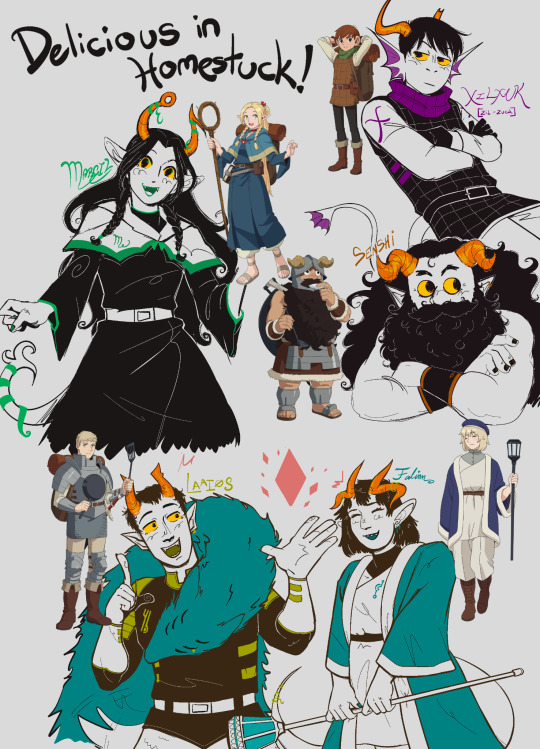
let's all enjoy a delicious meal together!!!
#this is what i actually did for 413 btw#i know someone already did it i promise i started working on this before they posted but we were on the same wavelength#homestuck#413#dungeon meshi#delicious in dungeon#laois touden#falin touden#marcille donato#chilchuck#senshi#farts and craft
491 notes
·
View notes
Photo

Year of the Rabbit!
#craft paint and crayola pencils and wax pastels#i felt rusty but free whilst working on this#excited for what's to come :)
7K notes
·
View notes